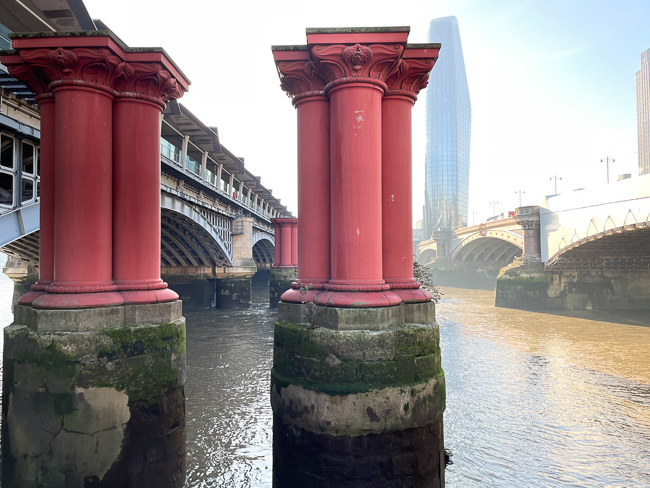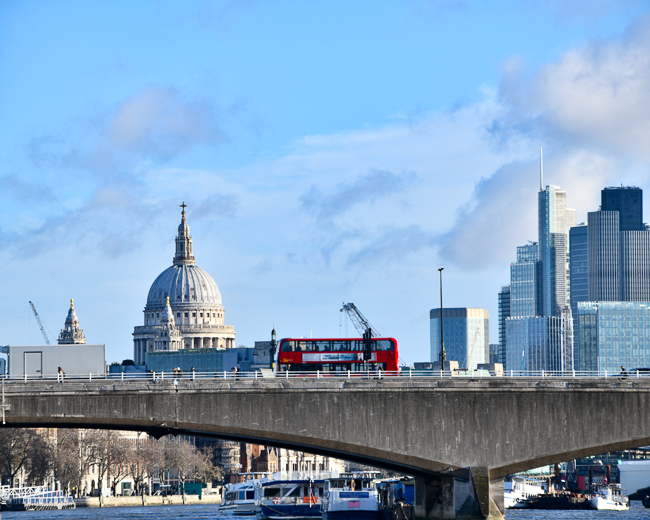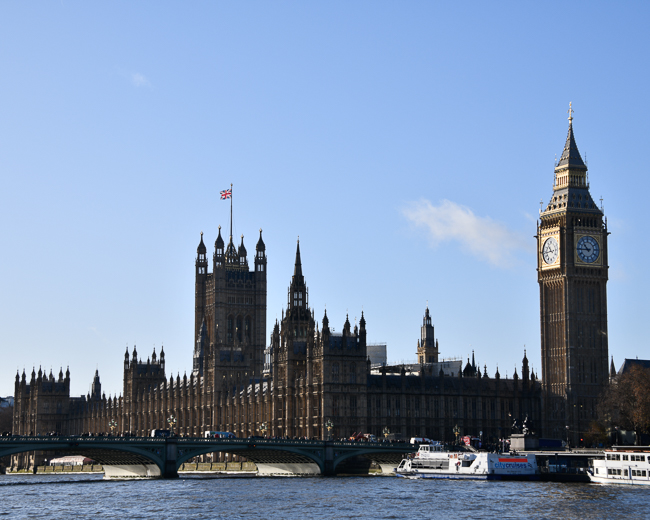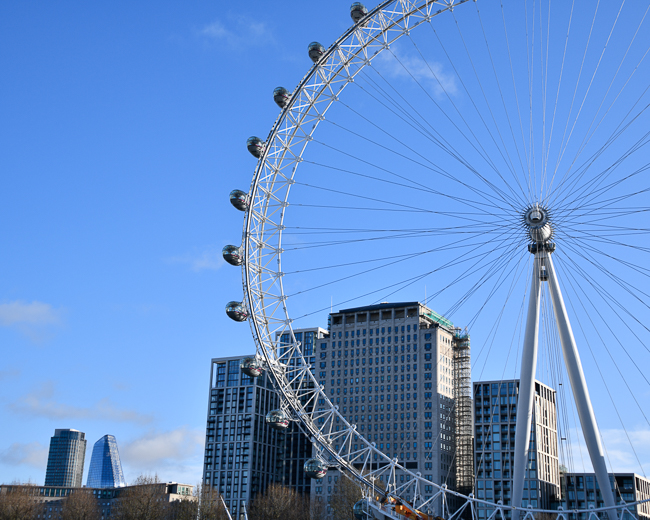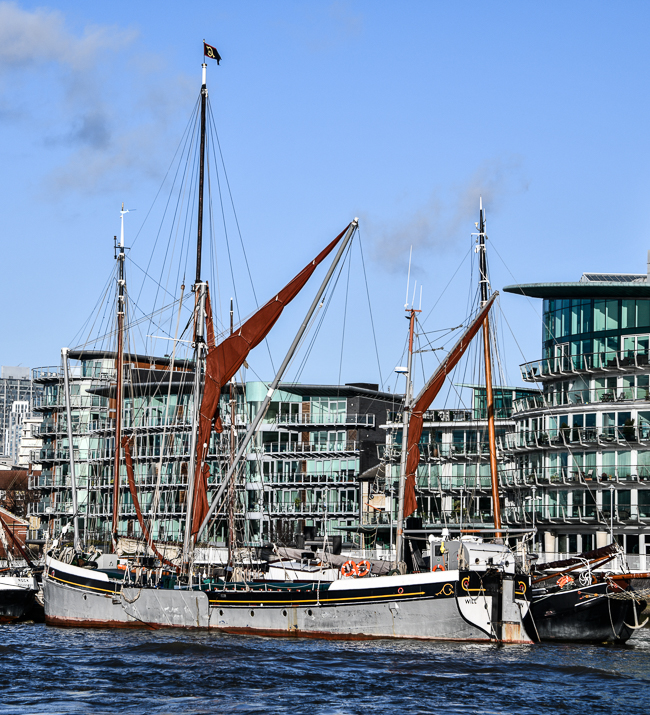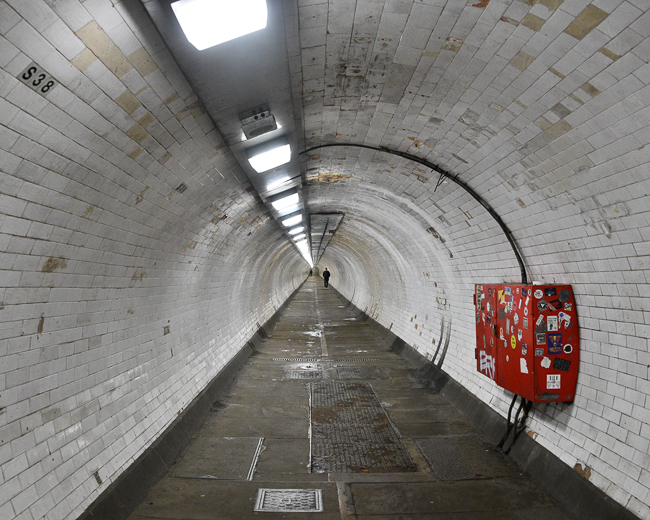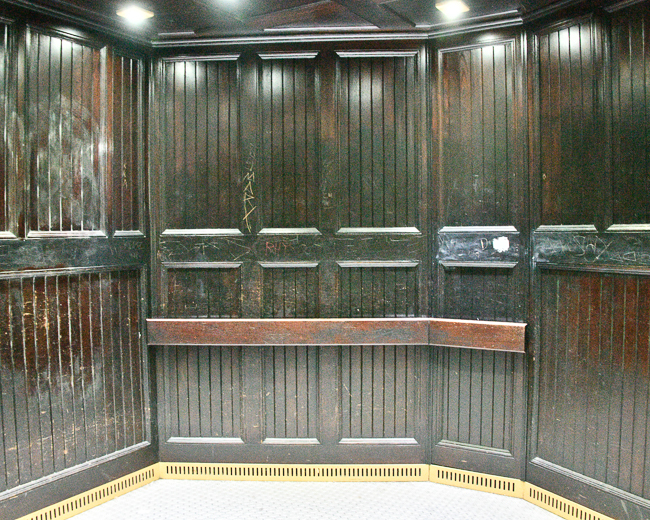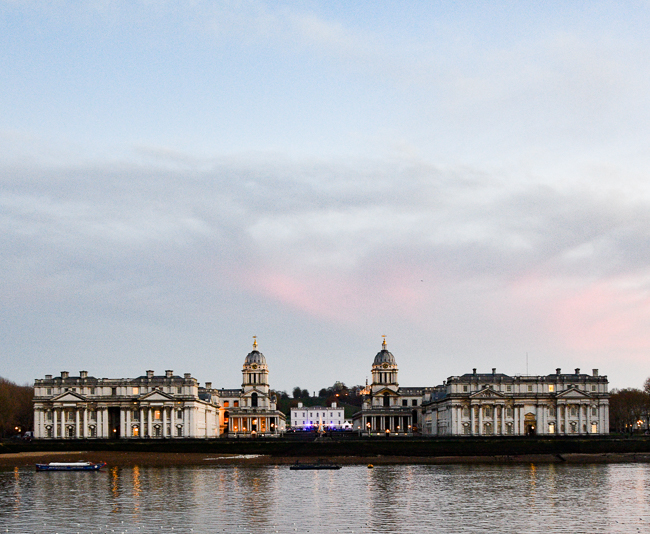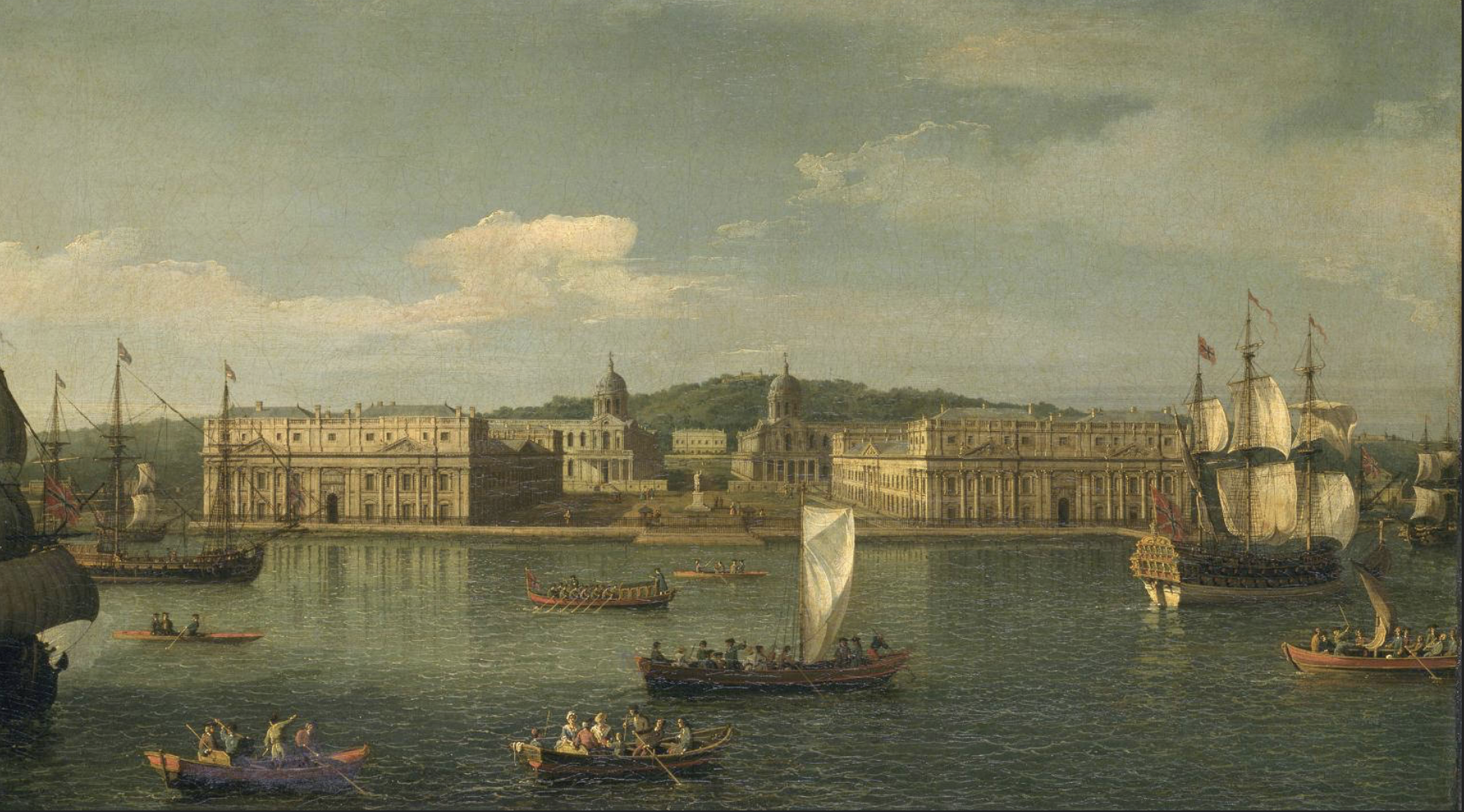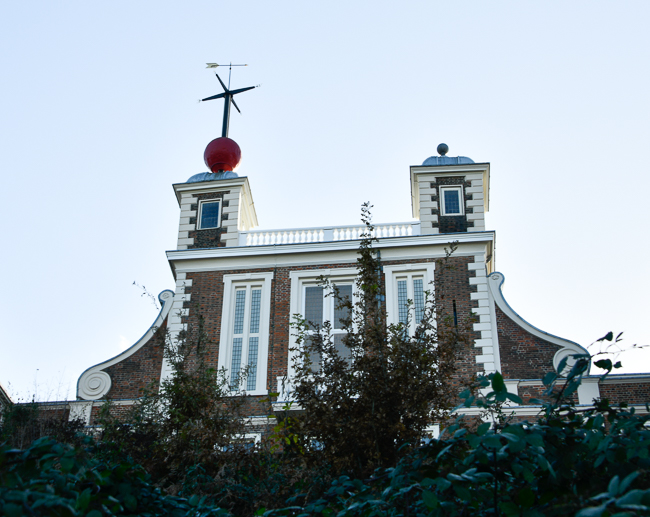December 2022
A trip from downtown London to Greenwich is about one hour. As the sun was shining and the temperatures have risen to the low 50s, a boat down the Thames seemed the most delightful way to get to Greenwich today.
Of course, there are bridges across the Thames; in fact, there are more than 200 bridges along the river, varying from small wooden crossings on the Upper Thames to large structures like Tower Bridge. But these red columns caught my eye. The red pillars are the remains of the Old Blackfriars Railway Bridge, which was built in 1864 by engineer Joseph Cubitt (1811-1872) for the London, Chatham, and Dover Railway (LC&DR).
From the river, you will see the classic London hot spots such as St Paul’s Cathedral.
You will espy the freshly unwrapped Big Ben with the Parliament Building. The bells of the Elizabeth Tower have been silent for five years; they were brought back on Remembrance Day, November 13th of this year.
And, of course, the London Eye.
Once past Canary Wharf, the boat picks up considerable speed and gets you to Greenwich in no time.
This city once relied completely on the River Thames for transportation, and the history of the Waterman is long and storied and worth the time to read about. I found this boat of particular interest to the story. The Thames Sailing Barge.
A Thames sailing barge, once common on the River Thames, is a type of commercial sailing boat. It is a flat-bottomed barge with a shallow draught with leeboards, perfectly adapted to the Thames Estuary. The larger barges were seaworthy vessels, and the largest vessels maneuverable by just two men.
There is just one issue with these historic boats. Their masts are really rather tall. Thus getting under the Tower Bridge presented challenges.
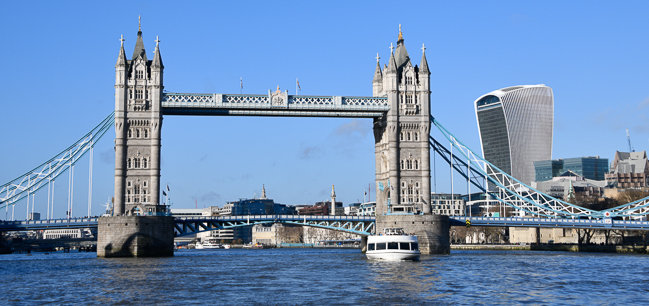
Tower Bridge is a bascule bridge. ‘Bascule’ is a French word, which can be translated as a seesaw, and describes how the two sides of the road of Tower Bridge open.
Today there isn’t that much large traffic plying the Thames, and by the late 1960s, Tower Bridge only opened a few hundred times a year. It is now fully automated and powered hydroelectrically.
Greenwich
I was here to visit the Royal Observatory, known for so many things, but mainly the home of what we now consider Greenwich Mean Time and the Prime Meridian.
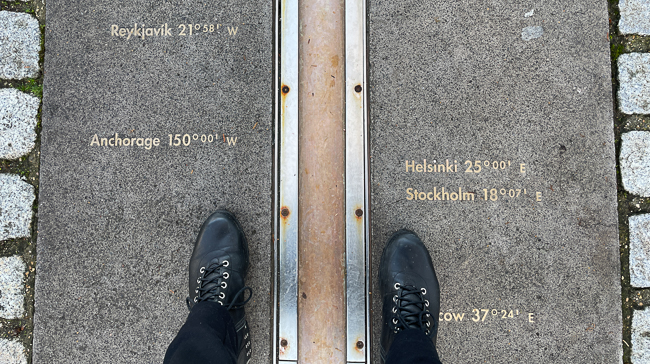
If you stand with one foot on one side and the other on the left of the Prime Meridian, you are perfectly in the middle of the east and west.
The museums of the area are interesting, and watching the Greenwich Time Ball drop at 1:00 is fun, but there are other interesting things in the neighborhood that are a little different and what I would prefer to write about.
There are several public transit options in the attempt to return to Camden, but taking the Docklands Light Railway (DLR) was the most sensible for our return. But an added adventure is to walk under the Thames and catch the DLR on the opposite side of the river.
The Greenwich tunnel links Cutty Sark to Island Gardens on the Isle of Dogs. Opened in 1902, the tunnel was built to replace a hugely unreliable ferry service that brought those who lived south of the river to work in the docks and shipyards.
The tunnel is 1,217 feet long and approximately 50 feet deep. Designed by Sir Alexander Binnie, it was opened in August 1902 at the cost of £127,000. The tunnel is lined with 200,000 glazed white tiles.
The use of a tunneling shield did the digging. However, the excavation was done entirely by hand. The tunnelers worked 24 hours in eight-hour shifts, managing to dig about 10 feet every 24 hours. The Greenwich Foot Tunnel was initially only accessible via a winding staircase, but lifts were added in 1904.
The elevators of the tunnel are octagonal and once had an attendant. Why they are octagonal, I have not been able to determine.
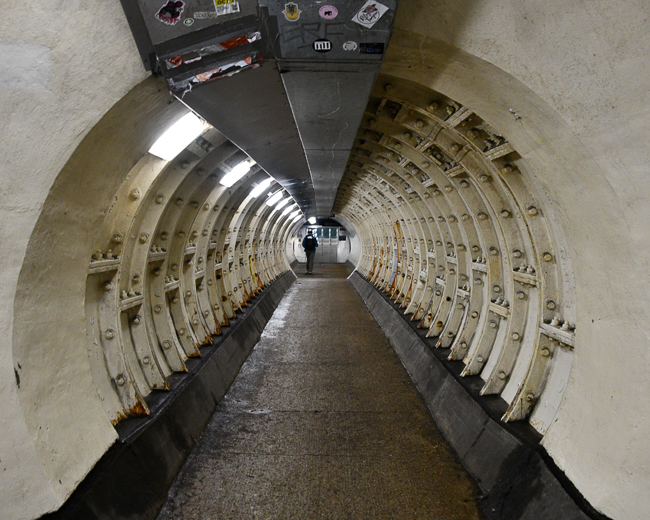
A short length of the tunnel was damaged on the first night of the Blitz, September 7 and 8, 1940. Fortunately, the damage was repaired quickly, and the use of the tunnel could continue. The repairs included these exposed metal ring segments.
I am not the only one to have admired this view. Canaletto painted this view in 1750.
Canaletto arrived in England in 1746 and stayed for nearly a decade. This painting shows the riverfront at Greenwich with the Royal Naval Hospital and the Queen’s House. The hospital building was designed by Sir Christopher Wren, who was also responsible for the Royal Observatory.
One needs at least one full day to enjoy all Greenwich offers, but the trip is well worth it.
